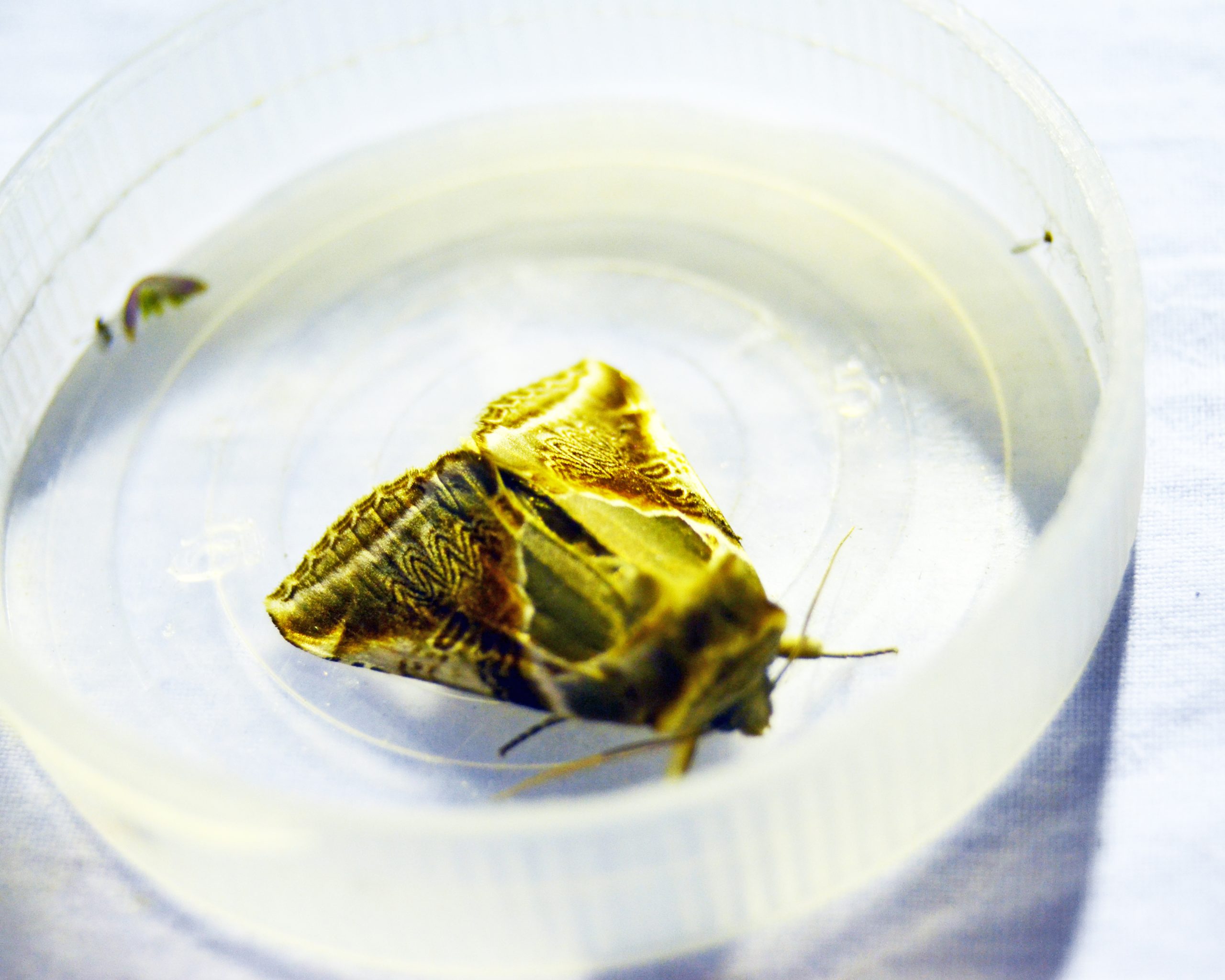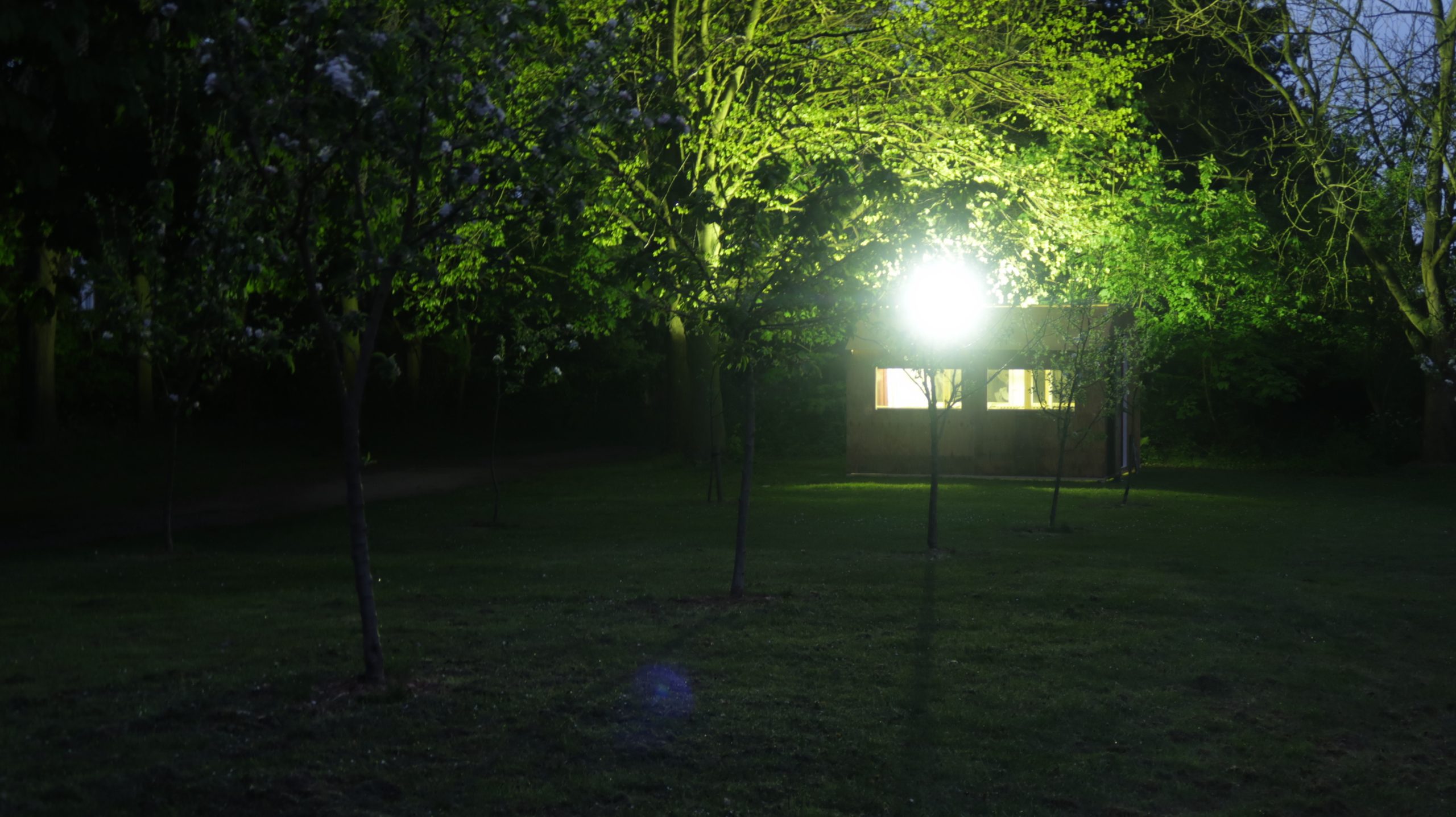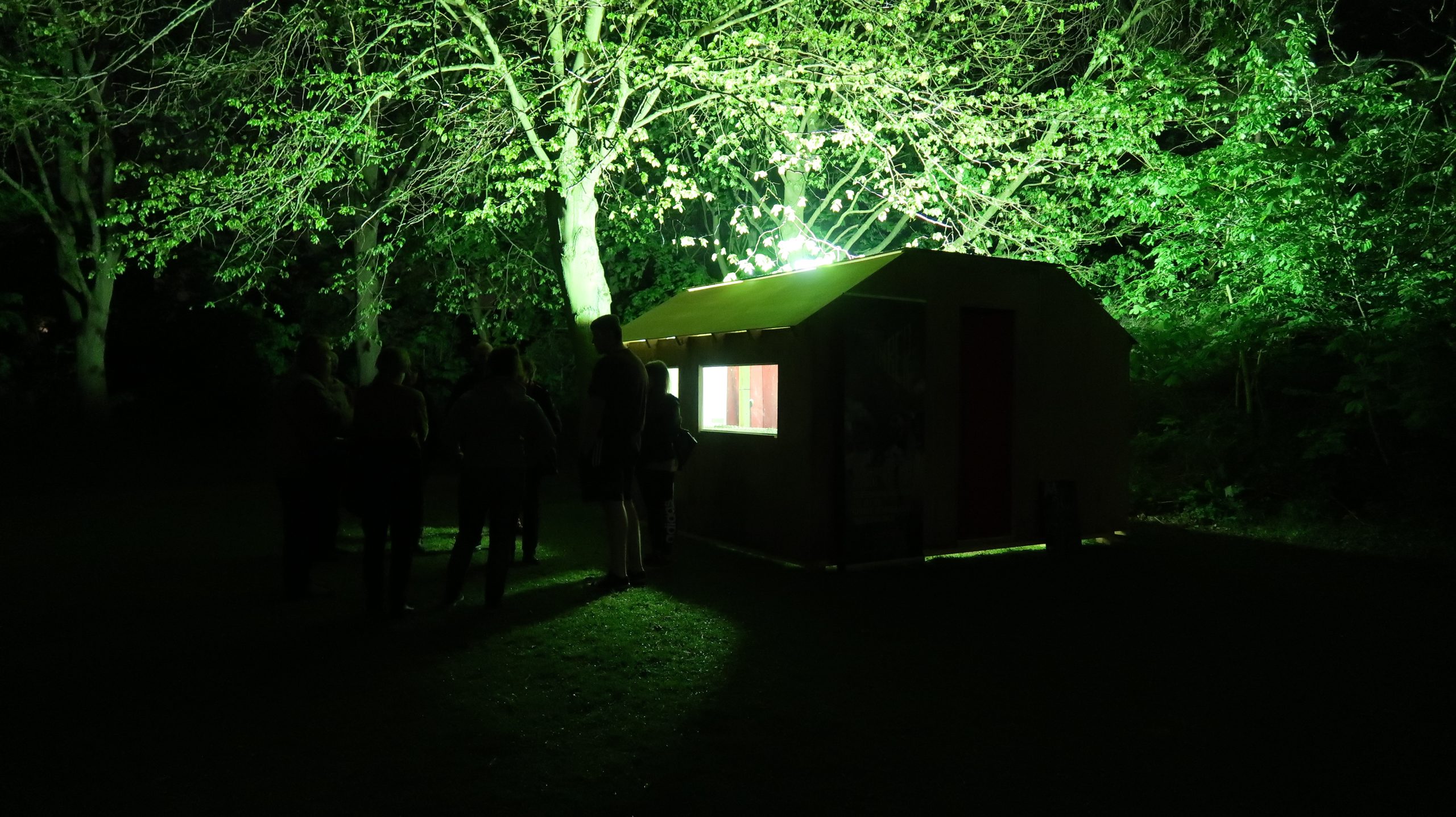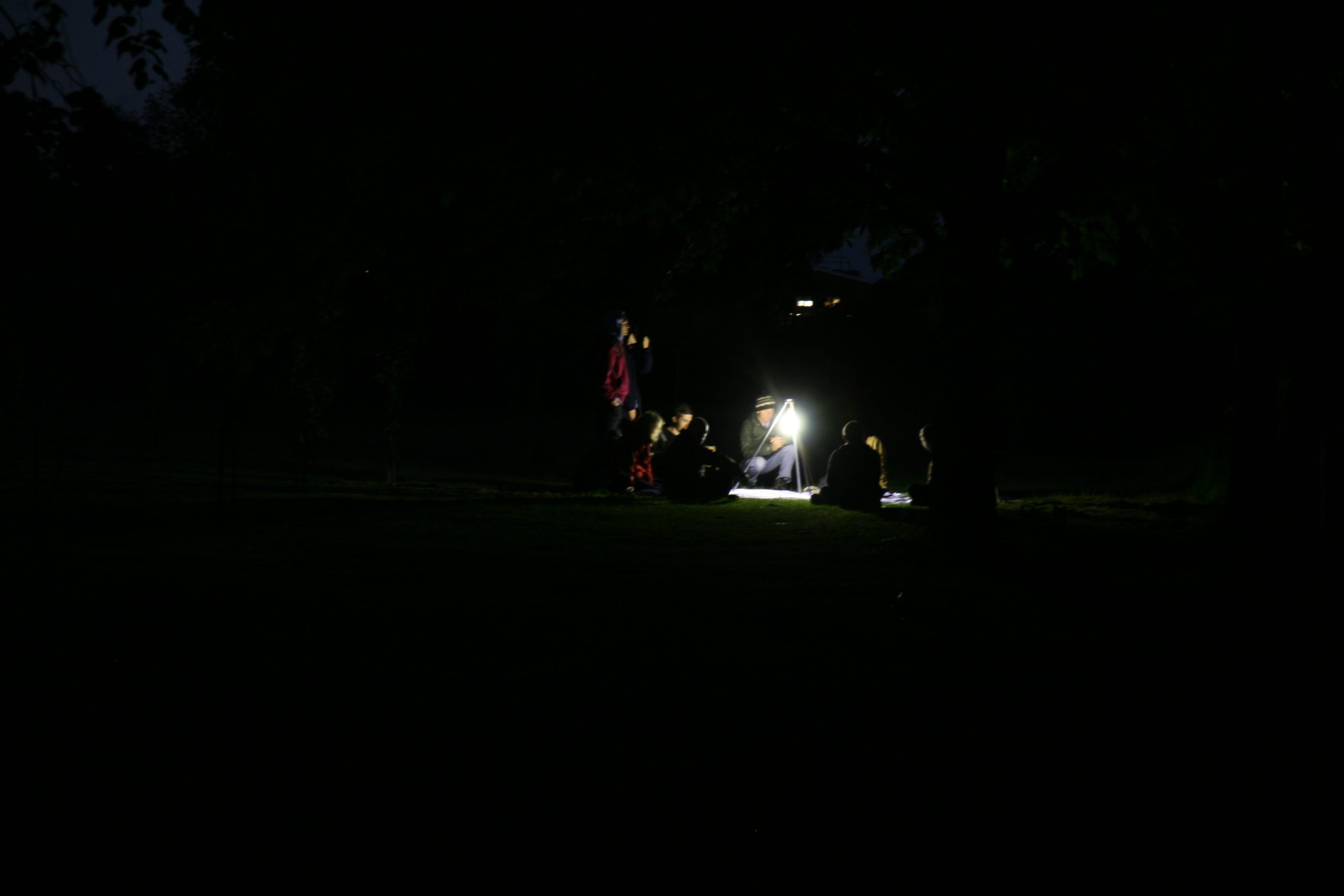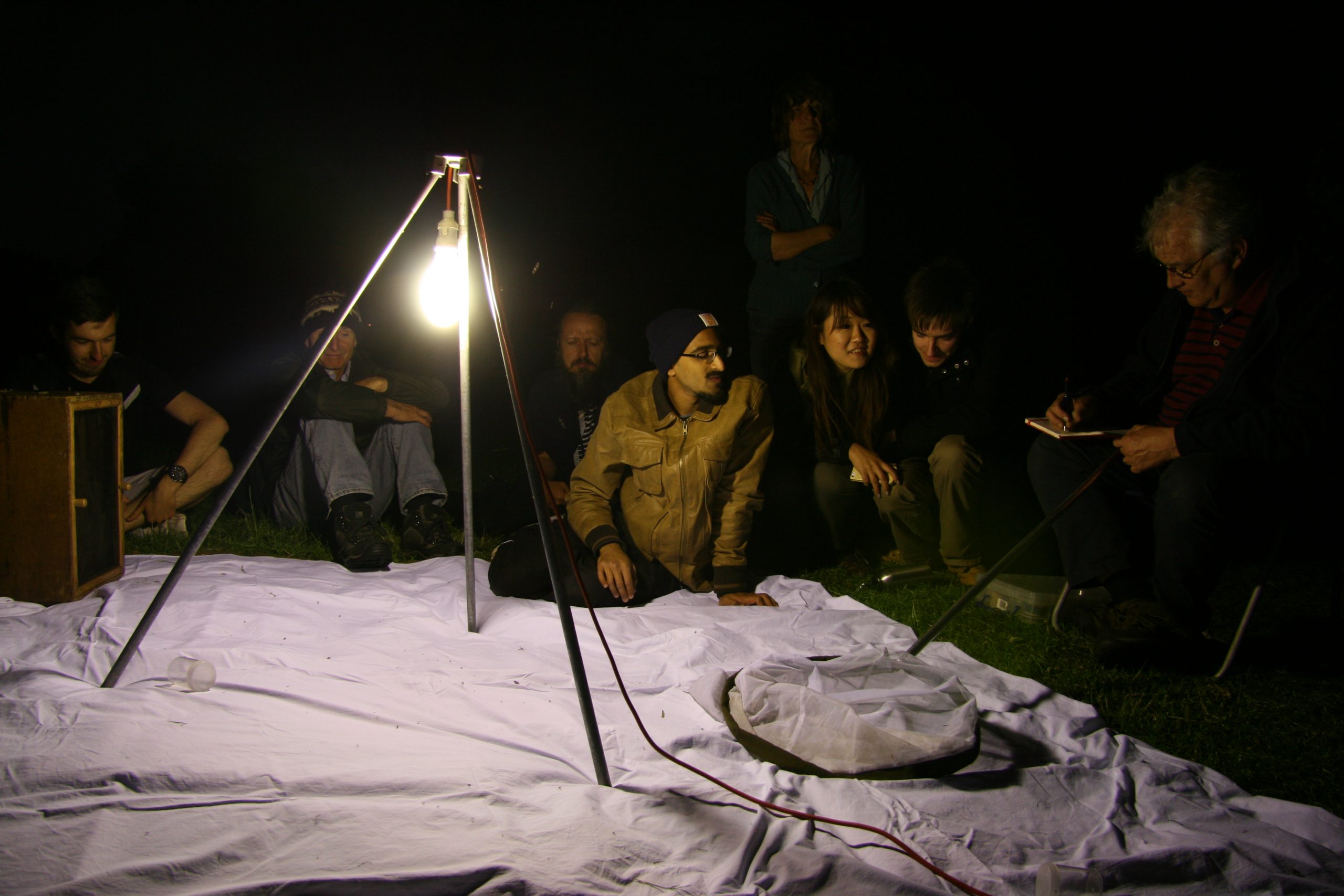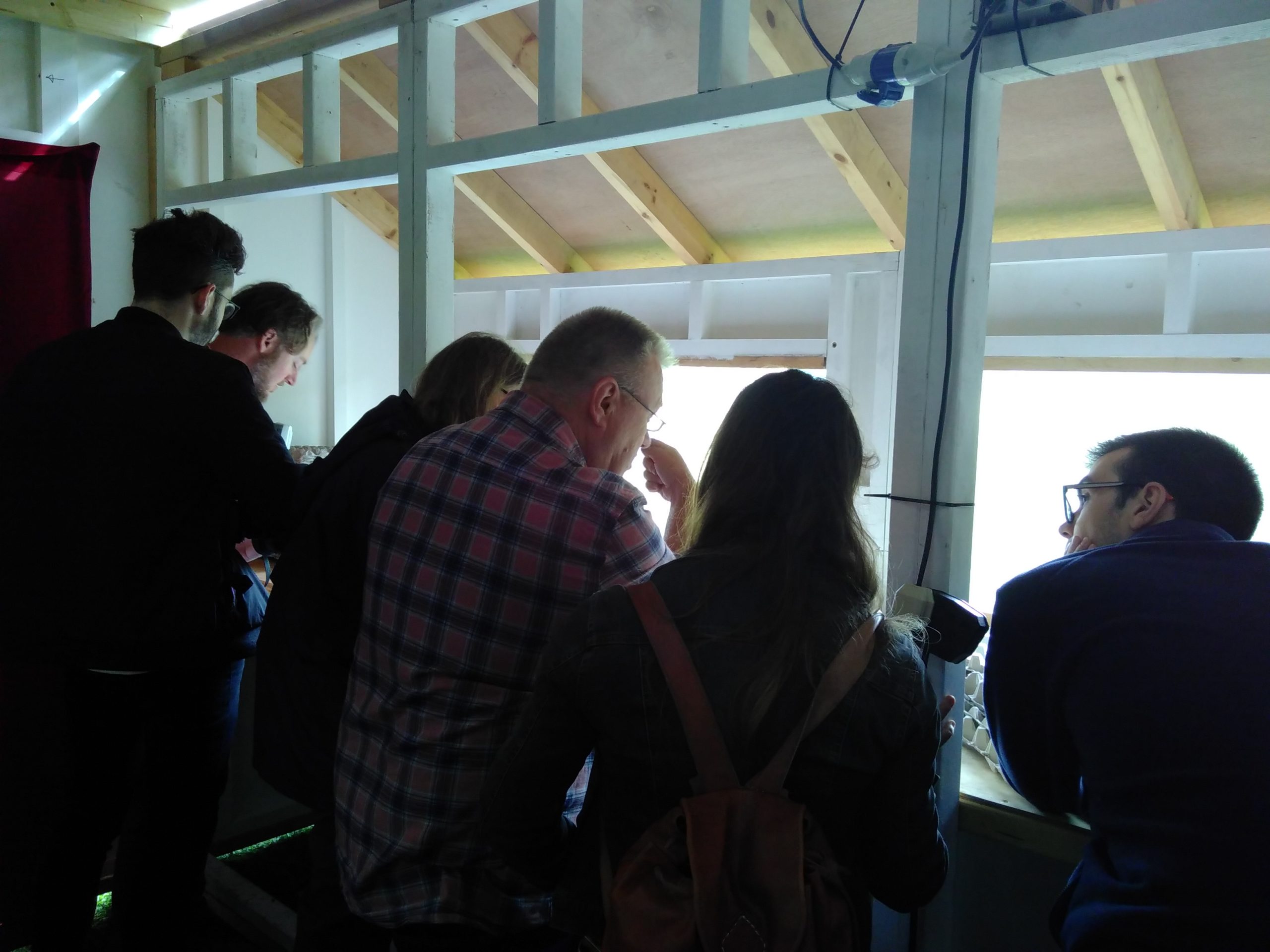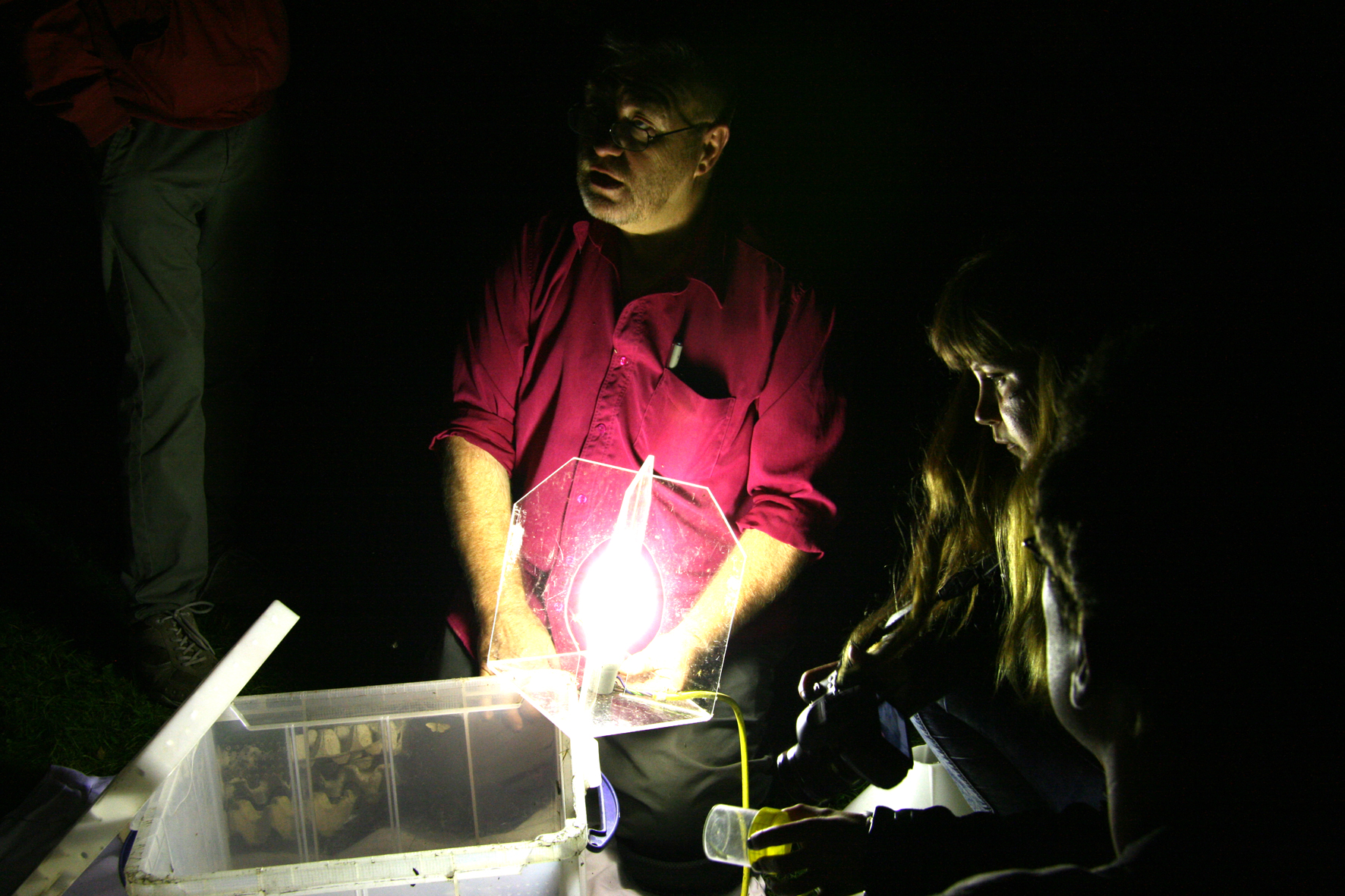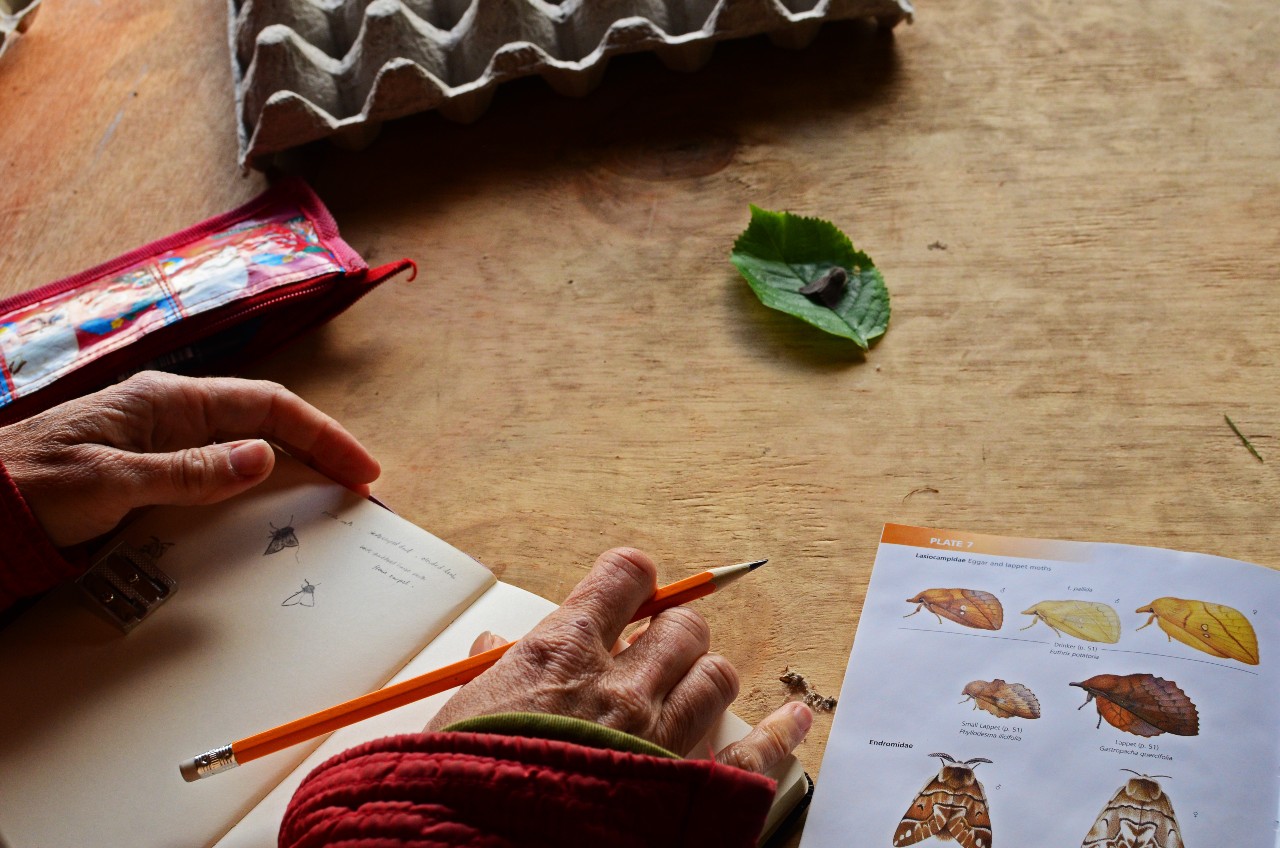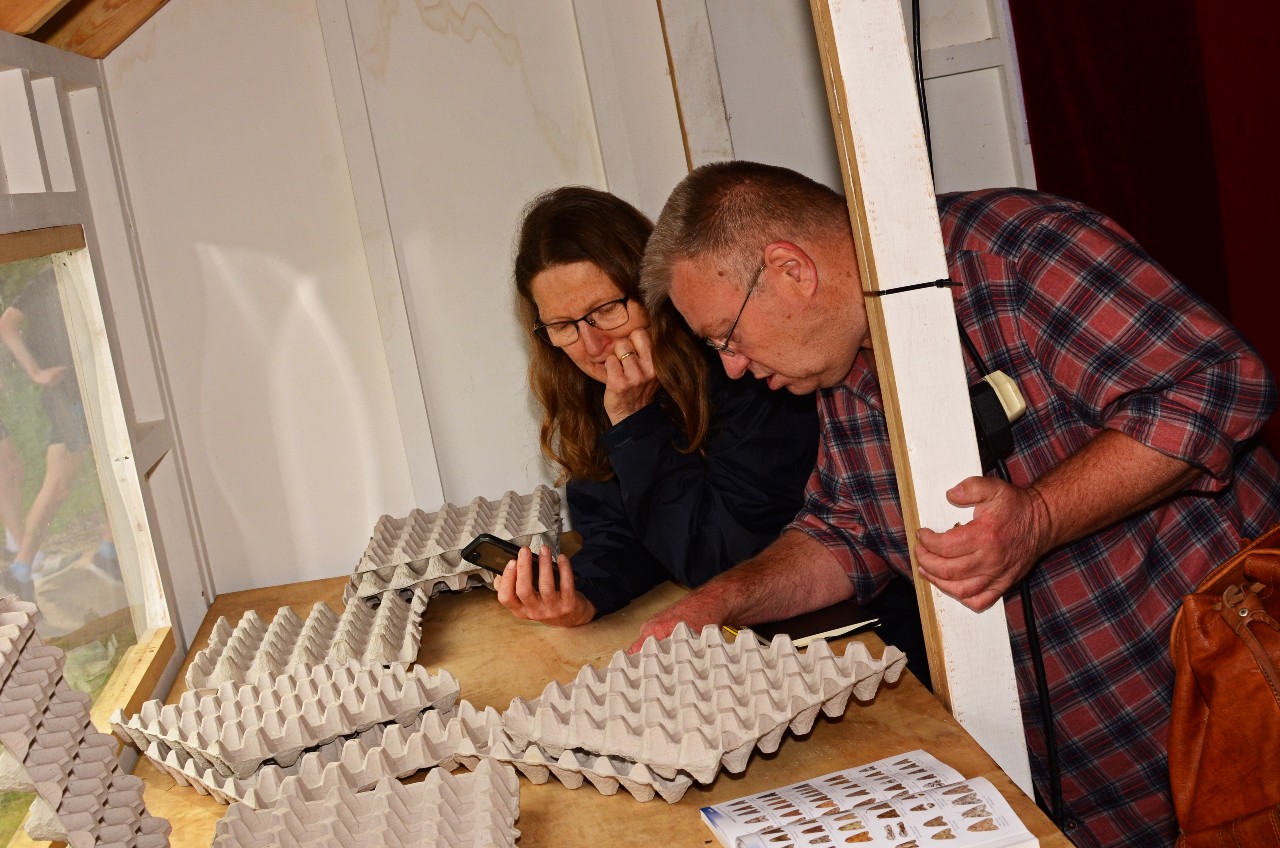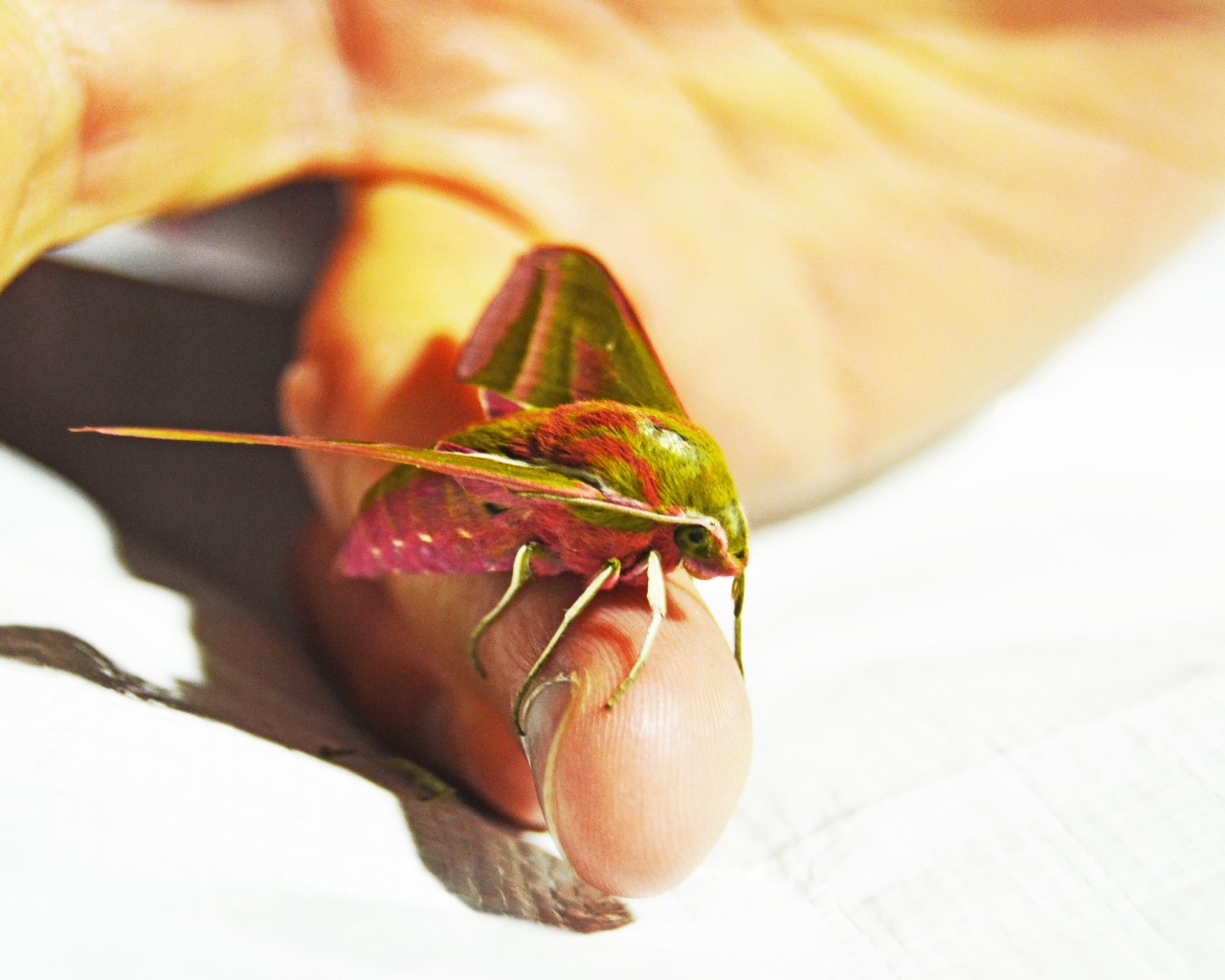Moth trapping has taken place with Graham Finch, Leicestershire Entymological Society in 2014, 2015 and with the Moth Hotel from Timber Festival in 2019. Graham has set up light and box traps and lights with white sheets at Loughborough over a number of years and recorded species close to and in the Barefoot Orchard. We have also made and hung out sugar ropes on the orchard trees using old sheets and pasted molasses onto the tree bark to attract more moth. Graham has records of the species he has located on site at Loughborough.
Graham told me about the links between moths and orchards:
Many moths have a relationship with orchards, the larvae will be eating leaves, burrowing into the trunks/stems and feeding on the fruit. The adults will be taking advantage of any nectar produces by the blooms. A few that are associated with orchards include: Archips podana; Light Emerald; Brimstone Moth and Buff-tip. Hundreds of species are polyphagus using fruit trees for their own convenience for example, nectar, egg laying and larval food supply. In the Autumn any fallen fermenting/rotting fruit will be an incredibly important food source for species preparing to hibernate through the winter.
On two occasions we have trapped an Emperor Hawk Moth. These huge moths are striking in size and colour. I wrote about the experience of carrying the moth one night from one pool of light to the other to show her to other people.
Emperor hawk moth, belly swollen with eggs clasped on my finger
I only really feel her weight when I’m walking in the dark space between two lamps
I’m resisting stroking her magenta and olive fur fearing the weight of my touch.
One of her footpads sticks to my finger refusing to peel off
This wild and beautiful creature clinging to my skin
A feeling of affection and connection arises which I quickly rationalize and dismiss, she is just sensing (enjoying?) the warmth of my skin.
